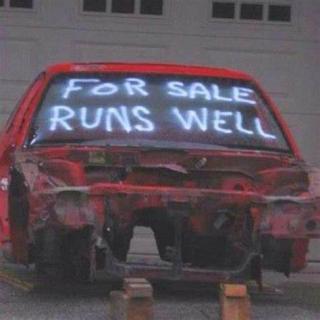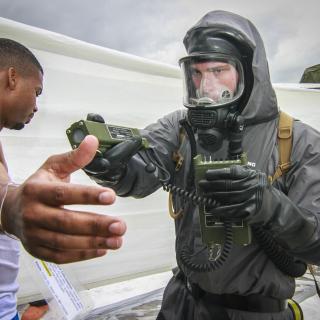Advertisement
The Near East Side has become one of the trendier places of Columbus in recent years. However, it was only a half-century ago this month that the Near East Side had a completely opposite story to tell. A story that has helped give the neighborhood a negative perception for decades. The Near East Side of 2019 is a long cry from the Near East Side of 1969. Or is it?
The day was Monday July 21, 1969, the day after the historic Apollo 11 Moon Landing. David Chesnut, a 69-year-old white businessman on 832 East Main Street fatally shot Roy Beasley, a 27 year-old Black sanitation worker for the City of Columbus who lived in the home directly behind Chesnut’s dry cleaning business, The Pad and Pillow Place, when the two got into an argument over Beasley’s three children playing on Chesnut’s property.
Columbus native and best-selling author Wil Haygood recalled the 1969 Near East Side Riots in Chapter 16 of his best-selling 2018 book, Tigerland, entitled “Blood in Ohio.” The five-page chapter tied in the riots to the upheaval at Ohio State that reached a boiling point over the next year with the Kent State tragedy. In the chapter, Haygood wrote of Chesnut, “Not many people in the community knew about Chesnut, except that he was stern, constantly scolding children – no matter their race – who ran and played around his establishment.”
Shortly after noon on that day, Chesnut shot Beasley twice, and according to the July 22, 1969 issue of The Columbus Dispatch, a witness overheard Chesnut say over a dying Beasley, “Have you had enough,” before shooting him twice more. As police and ambulance arrived to the scene, Chestnut was nonchalantly smoking a cigarette in his establishment (with gun in hand) as Beasley was pronounced dead.
Not long after Beasley’s grieving wife rushed over to the scene, riots erupted in the blocks surrounding Chesnuts’s business. Columbus Mayor Jack Sensenbrenner made a plea for help to stop the rioting in the neighborhood. There were several Columbus residents who answered the call. One of those residents was George Stultz, a middle-aged man from the Hilltop, and a member of the Citizen’s Band Crime Watch Association. Stultz was directing traffic at the intersection of Main and 18th Streets, when he was fatally struck by a sniper’s bullet. The riots would soon escalate, as 40 shops and businesses along Main Street and the surrounding neighborhood caught on fire in the three days that would follow.
After Stultz was gunned down, Ohio Governor James Rhodes called in the Ohio National Guard to calm the riots. All of Franklin County was placed on a curfew from July 23 to 25, 1969. No one was allowed outside after 6:30 P.M. and all alcohol sales were banned in Franklin County during those three days. There were 134 people arrested in just the first two days of riots alone.
Over the next few decades, the neighborhood continued to experience a decline that began with the construction of Interstates 70 and 71 in the early 1960s. According to the Columbus Dispatch, Chesnut’s shop burned down one month after the riots. In 1970, Chesnut was tried and acquitted of murder by a jury in which eleven of the twelve jurors were White.
Haygood cited that Mayor Jack Sensenbrenner’s reaction to the protests against police brutality in the months that followed would eventually cost Sensenbrenner re-election as mayor, losing to Republican Tom Moody in 1971. In a February 1970 meeting at Columbus City Council, Sensenbrenner said that “We will not make changes just because some militant groups make demands to suit their own self seeking interests.”
The Near East Side has slowly started to rebuild economically since the 1960s with new businesses springing up in the western part of the neighborhood, but the population is still less than that from the early 1960s. And while more work needs to be done to bridge the gap between the Police and the Community, the similarities between the law and order from Sensenbrenner and Rhodes from 50 years ago are still in Columbus in the present time, with high-profile police-related shootings and accounts of police brutality by several Columbus Police officers in just the past several years alone.
Even with the long-standing stigma of the Near East Side, there are still people who are fighting to make the community a better place. Despite the creations of the Franklin Park Civic Association, Olde Towne East Neighborhood Association, and the Near East Area Commission in 1974, 1975, and 1979 respectively, it wasn’t until after AmeriFlora ’92 that interest in the area started to revive, and it was only in this decade that successful new businesses have started to flourish and prosper in the Near East Side.
With new hope for a neighborhood, which at the beginning of the decade saw Main Street as a war zone between gangs and drug dealers, we will hopefully see a brighter day, starting with the next 50 years.



